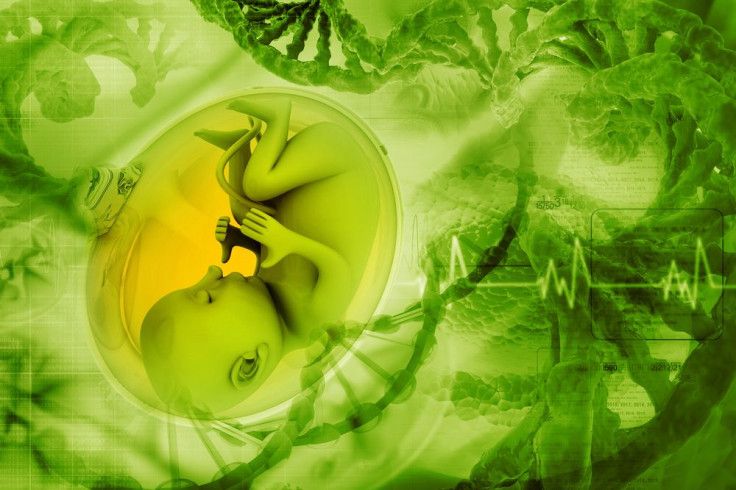The Science Of Human Cloning: How Far We've Come And How Far We're Capable Of Going

While the ethics and legality of human cloning are blurry, the science behind the idea is quite clear, with all research suggesting the practice is possible. Scientists have already cloned human embryos and many believe creating fully developed humans is the next step. But while novels such as A Brave New World and Cloud Atlas depict human cloning as systematic and as easy as a car part assembly line, in reality the process is a bit more complex.
Cloning in A Nutshell
Cloning describes a number of processes used to create genetically identical copies of a biological entity. Although these processes can occur naturally, such as in some plants and bacteria, the cloning that most likely comes to mind when you hear the word is artificially copying a whole animal.
According to the National Institutes of Health, for this type of cloning, also known as reproductive cloning, scientists remove a mature somatic cell (any type of cell, except a sperm or egg cell) from the animal the scientists wish to copy. The desired DNA is then transferred into an egg of the same species that has had its own DNA removed.
Cloning takes the randomness out of sexual reproduction. Most living things on Earth get half of their DNA from their mother and half from their father, giving them an endless number of genetic probabilities to create their own unique DNA. In cloning, DNA only comes from one organism, which takes the game of chance out of the reproduction and gives offspring an exact copy of the original DNA.
The cloned egg is then allowed to mature into an early embryotic stage before it is injected back into the womb of an adult female animal for gestation. Upon birth, the newborn animal is officially known as a clone.
Seems simple enough, right? Cloning animals is not new science, with the first animal, a tadpole, being cloned in 1952. In 1996, Dolly the sheep became the first mammal to have been successfully cloned born. According to the University of Utah, to date scientists have cloned even more animals, including mice, cows, and goats.
Cloning is also an important practice in other facets of science, although not to the same degree as reproductive cloning. For example, therapeutic cloning, that is cloning embryonic stem cells for testing is a regular practice with the goal of creating not a whole being but rather replacing damaged tissue. In a 2014 study, scientists were able to clone adult stem cells, a huge breakthrough for therapeutic cloning research.

We Can Do It, But Is It Safe?
It would be theoretically possible to clone humans, but, to date, there are no records of an actual fully developed human ever being cloned, Live Science reported. The closest we have come to this is the 1997 cloning of our closet relative: the monkey. Scientists have also succeeded in creating human clone embryos from the skin cells of both infants and full grown adults. However, none of these embryos were ever allowed to mature fully.
Despite scientists being capable of cloning humans, it is still highly unlikely that procedure will even come to be due to ethical reasons. For example, cloning has an extremely high failure rate, with only about one out of 100 cloning attempts ending in a viable animal. Also, reported by Live Science, currently cloned animals also experience poor health. Many are born with abnormally large organs and as a result they often die early or need to be euthanized. For these reasons, many scientists are opposed to even conducting research into the highly controversial subject.
"It's like sending your baby up in a rocket knowing there's a 50-50 chance it's going to blow up. It's grossly unethical," Dr. Robert Lanza, chief scientific officer at the biotech company Advanced Cell Technology, which works on cell therapies for human diseases and has cloned animals, told Live Science.
Future Cloning
The legalities on human cloning differ around the world. In the U.S., human cloning is only explicitly outlawed in eight states. According to the Bioethics Defense Fund, an additional four states simply prohibit state funding of human cloning and 10 states allow human embryos to be cloned but ban the embryo from being allowed to mature full term (thus outlawing reproductive cloning but allowing therapeutic cloning). The international stance on cloning is clearer, with the United Nations General Assembly banning all forms of human cloning in 2005, including both reproductive and therapeutic.
For these legal reasons as well as ethical reasons, it's probable that the future of cloning will lie more in therapeutic cloning research than reproductive cloning. The only difference between therapeutic cloning and reproductive cloning is that in therapeutic cloning the embryo is never transferred into a female’s womb. The current goals for therapeutic cloning are a means to develop both patient and disease specific therapies for certain conditions. The procedure could also potentially use a patient’s own cells for tissue replacement. Although the science is exciting, it will likely take many decades of research before scientists are able to create transplantable tissue.



























